- Regulatory Status
- RUO
- Other Names
- T-cell growth factor (TCGF), Eosinophil differentiation factor (EDF), Killer cell helper factor (KHF), Macrophage-activating factor for cytotoxicity I (MAF-C I), Thymocyte differentiation factor (TDF)
- Ave. Rating
- Submit a Review
- Product Citations
- publications
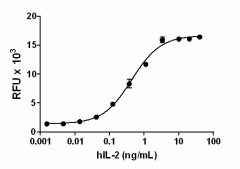
-

Recombinant Human IL-2 induces the proliferation of mouse HT-2 cells in a dose-dependent manner. The ED50 for this effect is 0.2 – 1.0 ng/mL.
IL-2 was discovered through its function as a T cell growth factor (TCGF), and plays a pivotal role in immune responses against pathogenic infection. Recognition and binding of the foreign Ags by the TCRs stimulate both the secretion of IL-2 and the expression of IL-2Rs on the T cell surface. Subsequently, the IL-2/IL-2R interaction activates the intracellular Ras/Raf/MAPK, JAK/STAT, and PI3K/AKT signal pathways, and ultimately stimulates the growth, differentiation, and survival of the Ag-selected cytotoxic T cells. Human IL-2 acts on murine and human T cells, and its receptors are shared by others cytokines. IL-2Rα is an IL-2–specific receptor, IL-2Rβ is shared with IL-15 and the γ chain that is a common receptor shared by many cytokines including IL-2, IL-4, IL-7, IL-9, IL-15, and IL-21.
Product DetailsProduct Details
- Source
- Human IL-2, amino acids Ala21-Thr153 (Accession # NM_000586), was expressed in insect cells.
- Molecular Mass
- The 133 amino acid recombinant protein (Ala21-Thr153) has a predicted molecular mass of 15418 Da. The DTT-reduced and the non-reduced protein migrate at approximately 15 kD by SDS-PAGE. The N-terminal amino acid is Ala.
- Purity
- Purity is >95%, as determined by Coomassie stained SDS-PAGE.
- Formulation
- The protein was 0.22 µm filtered protein solution is in 0.1% TFA, 30% acetonitrile.
- Endotoxin Level
- Less than 0.01 ng per µg cytokine as determined by the LAL method.
- Concentration
- 10 and 25 µg sizes are bottled at 200 µg/mL. 100 µg size and larger sizes are lot-specific and bottled at the concentration indicated on the vial. To obtain lot-specific concentration and expiration, please enter the lot number in our Certificate of Analysis online tool.
- Storage & Handling
- Unopened vial can be stored between 2°C and 8°C for up to 2 weeks, at -20°C for up to six months, or at -70°C or colder until the expiration date. For maximum results, quick spin vial prior to opening. The protein can be aliquoted and stored at -20°C or colder. Stock solutions can also be prepared at 50 - 100 µg/mL in appropriate sterile buffer, carrier protein such as 0.2 - 1% BSA or HSA can be added when preparing the stock solution. Aliquots can be stored between 2°C and 8°C for up to one week and stored at -20°C or colder for up to 3 months. Avoid repeated freeze/thaw cycles.
- Activity
-
The ED50 = 0.05 – 0.3 ng/mL as determined by the dose-dependent stimulation of CTLL2 cell proliferation. The ED50 = 0.2 – 1.0 ng/mL as determined by the dose-dependent stimulation of HT-2 cell proliferation.
The specific activity of recombinant human IL-2 is approximately 2.36 x 104 IU/μg when compared against the 2nd WHO International Standard for Human IL-2 (NIBSC code: 86/500) as determined by dose-dependent stimulation of HT-2 cell proliferation.
For more information on specific activity, please visit the Recombinant Protein Unit Conversions page. - Application
-
Bioassay
- Application Notes
-
This IL-2 protein is biologically active and can be used for in vitro assays.
BioLegend carrier-free recombinant proteins provided in liquid format are shipped on blue-ice. Our comparison testing data indicates that when handled and stored as recommended, the liquid format has equal or better stability and shelf-life compared to commercially available lyophilized proteins after reconstitution. Our liquid proteins are verified in-house to maintain activity after shipping on blue ice and are backed by our 100% satisfaction guarantee. If you have any concerns, contact us at tech@biolegend.com. -
Application References
(PubMed link indicates BioLegend citation) -
- Wingender G, et al. 2011. J. Exp. Med. 208:1151. PubMed
- Product Citations
-
Antigen Details
- Structure
- Cytokine
- Distribution
-
Activated T cells
- Function
- IL-2 works in vivo to promote clonal T-cell expansion during immune responses. IL-2 stimulates the growth, differentiation, and survival of the Ag-selected cytotoxic T lymphocytes (CTLs). In addition, IL-2 regulates facilitate the proliferation and the synthesis of immunoglobulin by B cells, induces the generation and persistence of natural killer (NK) cells. Also, IL-2, through its role in activation-induced cell death (AICD) and its participation in the maintenance of peripheral CD4+CD25+ regulatory T (TReg) cells, is involved in the elimination of self-reactive T cells, which have a role in the pathogenesis of autoimmune diseases.
- Interaction
- T cells, B cells, NK cells, LAK cells, monocytes, macrophages, oligodendrocytes
- Ligand/Receptor
- IL-2R is composed of three subunits, IL-2R alpha (p55, Tac Ag, or CD25), IL-2R beta (p75 or CD122), and the γc chain (p65 or CD132).
- Cell Type
- Embryonic Stem Cells, Hematopoietic stem and progenitors
- Biology Area
- Immunology, Stem Cells
- Molecular Family
- Cytokines/Chemokines
- Antigen References
-
1. Smith KA. 1988. Science 240:1169.
2. D’Cruz LM, et al. 2005. Nature Immunol. 6:1152.
3. Maloy KJ, et al. 2005. Nature Immunol. 6:1071.
4. Waldmann TA. 2006. Nature Rev. Immunol. 6:595.
5. Ma A, et al. 2006. Annu. Rev. Immunol. 24:657.
6. Du J, et al. 2010. J. Immunol. 184:1361. - Gene ID
- 3558 View all products for this Gene ID
- UniProt
- View information about IL-2 on UniProt.org
Related FAQs
- Why choose BioLegend recombinant proteins?
-
• Each lot of product is quality-tested for bioactivity as indicated on the data sheet.
• Greater than 95% Purity or higher, tested on every lot of product.
• 100% Satisfaction Guarantee for quality performance, stability, and consistency.
• Ready-to-use liquid format saves time and reduces challenges associated with reconstitution.
• Bulk and customization available. Contact us.
• Learn more about our Recombinant Proteins. - How does the activity of your recombinant proteins compare to competitors?
-
We quality control each and every lot of recombinant protein. Not only do we check its bioactivity, but we also compare it against other commercially available recombinant proteins. We make sure each recombinant protein’s activity is at least as good as or better than the competition’s. In order to provide you with the best possible product, we ensure that our testing process is rigorous and thorough. If you’re curious and eager to make the switch to BioLegend recombinants, contact your sales representative today!
- What is the specific activity or ED50 of my recombinant protein?
-
The specific activity range of the protein is indicated on the product datasheets. Because the exact activity values on a per unit basis can largely fluctuate depending on a number of factors, including the nature of the assay, cell density, age of cells/passage number, culture media used, and end user technique, the specific activity is best defined as a range and we guarantee the specific activity of all our lots will be within the range indicated on the datasheet. Please note this only applies to recombinants labeled for use in bioassays. ELISA standard recombinant proteins are not recommended for bioassay usage as they are not tested for these applications.
- Have your recombinants been tested for stability?
-
Our testing shows that the recombinant proteins are able to withstand room temperature for a week without losing activity. In addition the recombinant proteins were also found to withstand four cycles of freeze and thaw without losing activity.
- Does specific activity of a recombinant protein vary between lots?
-
Specific activity will vary for each lot and for the type of experiment that is done to validate it, but all passed lots will have activity within the established ED50 range for the product and we guarantee that our products will have lot-to-lot consistency. Please conduct an experiment-specific validation to find the optimal ED50 for your system.
- How do you convert activity as an ED50 in ng/ml to a specific activity in Units/mg?
-
Use formula Specific activity (Units/mg) = 10^6/ ED50 (ng/mL)
 Login/Register
Login/Register 







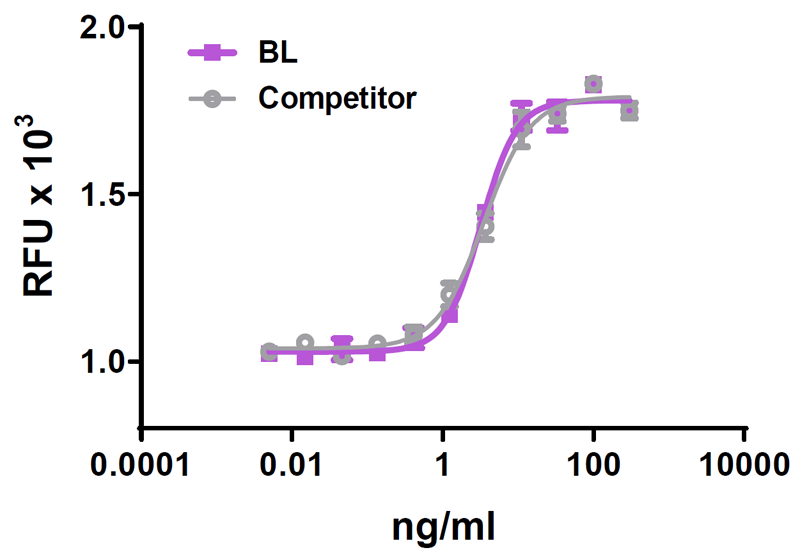
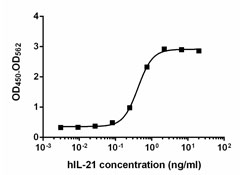
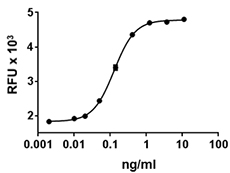
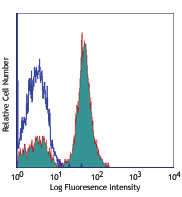



Follow Us